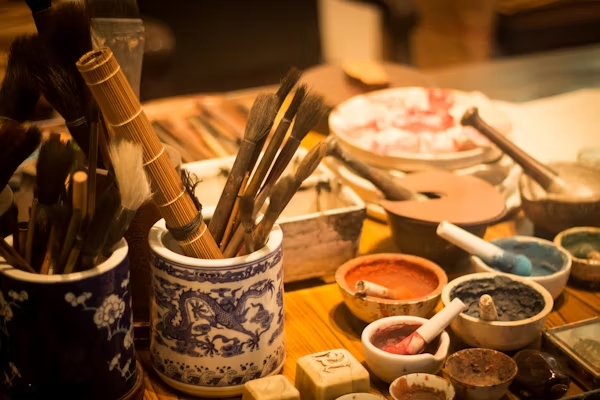In the world of design, construction, and product development, perfection isn’t just about structure or function—it’s about finish. This is where Acamento, the sophisticated art of crafting perfect finishes, plays a vital role. Whether you’re working in architecture, woodworking, fashion, interior design, or even digital creation, the concept of Acamento is essential for producing polished, professional, and high-quality results.
This article explores what Acamento means, how it applies across industries, its benefits, and how to master the technique of creating perfect finishes. If you’re seeking to elevate your craftsmanship, brand, or product to the next level, understanding and implementing the principles of Acamento is key.
What is Acamento?
Derived from the Portuguese word for “finishing” or “completion,” Acamento refers to the final stage of a creation process, focusing on surface quality, aesthetic refinement, and precision detailing.
In both literal and metaphorical terms, Acamento is the art of refining a project until it reaches its most perfect, polished, and intentional form. It is where functionality meets beauty, and where the creator’s care is most evident.
Acamento may refer to:
-
The polished finish of a wood surface
-
The seamless stitching on luxury garments
-
The final polish of a marble floor
-
The user interface of a high-end app
-
The color grading of a film
In every case, Acamento is the detail that defines quality and sets average work apart from excellence.
Why Acamento Matters in Modern Craft and Design
Today’s consumers are not just looking for usable products—they demand aesthetic sophistication, smooth experience, and lasting quality. In this context, Acamento isn’t optional—it’s expected.
Here are a few reasons why Acamento matters more than ever:
✅ First Impressions Count
The finish of a product or design is often the first thing people notice. Whether it’s a website, a countertop, or a luxury handbag, a flawless finish suggests care, professionalism, and value.
✅ Durability and Performance
Proper finishing techniques don’t just enhance looks—they protect the object from wear and damage, improving longevity and function.
✅ Brand Differentiation
In crowded markets, refined finishes help brands stand out. Acamento becomes a signature of identity and trustworthiness.
✅ Customer Satisfaction
A product with a clean, sleek, and elegant finish offers a superior user experience, increasing satisfaction and repeat business.
Industries Where Acamento Is Essential
🏗️ Architecture and Construction
From flooring and cabinetry to metalwork and concrete surfaces, Acamento plays a key role in aesthetic appeal and material protection. Choices like matte vs. gloss, texture, or edge detailing define the success of interior and exterior spaces.
🪑 Furniture and Woodworking
In woodworking, finishes like varnish, stain, and lacquer define not only the look but the durability of the piece. Sanding, polishing, and sealing are critical aspects of Acamento.
🧵 Fashion and Textiles
In high fashion, Acamento includes stitching, fabric treatment, lining, and finishing seams. Clean hems, smooth silhouettes, and properly aligned patterns distinguish couture from fast fashion.
🎨 Digital Design and User Interfaces
Even in digital domains, Acamento exists. The micro-interactions, animations, font spacing, and color gradients on a website or app impact user experience and usability.
🏠 Interior Design
From wall textures to trim finishes and furniture accents, interior designers use Acamento to create harmony and flow in a room.
🛠️ Automotive and Industrial Design
Car detailing, paint finishing, and metal texturing are all part of Acamento—adding not just visual appeal but also resilience against the elements.
Types of Finishes in Acamento
Depending on the medium, Acamento can include a variety of finishing types:
| Type of Finish | Application | Benefit |
|---|---|---|
| Matte | Walls, wood, metal | Minimalist, soft look |
| Glossy | Plastics, lacquered furniture, digital interfaces | Reflective, modern finish |
| Textured | Concrete, upholstery, stone | Adds depth and character |
| Brushed | Metal, leather | Industrial, durable appearance |
| Natural Finish | Wood, textiles | Highlights organic materials |
| Polished/Mirrored | Stone, ceramics, cars | Sleek, luxurious appeal |
The Process of Achieving the Perfect Finish
Mastering Acamento is about attention to detail, material understanding, and refined technique. Here are the general steps involved across most disciplines:
1. Surface Preparation
Before any finish is applied, the surface must be properly prepped:
-
Sanding or smoothing
-
Cleaning or degreasing
-
Leveling imperfections
2. Application of Base Coats or Treatments
This could include primers, sealants, conditioners, or undercoats that create a foundation for the finish.
3. Finishing Layer Application
Apply the chosen finish using controlled, even methods—whether by brush, spray, polish, or digital interface design.
4. Drying or Curing
Allow the finish to set, dry, or bond. Rushing this stage often ruins the entire effect.
5. Buffing, Polishing, or Final Touches
Final refinement gives the finish its perfect clarity, texture, and feel.
6. Quality Inspection
Examine the finished product under various lights or conditions to ensure consistency, durability, and elegance.
Tips for Mastering Acamento in Any Field
Whether you’re a designer, maker, or artist, Acamento can elevate your work to new heights. Here’s how to master it:
🧠 1. Learn the Properties of Your Materials
Each material—wood, fabric, metal, or digital pixels—requires unique finishing techniques. Learn how they react to treatments and what brings out their best features.
🎯 2. Choose the Right Tools
Quality tools—like fine-grit sandpaper, precision brushes, or high-resolution design software—make all the difference in achieving clean, precise finishes.
🕰️ 3. Take Your Time
Rushing through a finish results in visible flaws. Give the process the patience it deserves—good Acamento takes time.
🔍 4. Develop an Eye for Detail
Excellence lies in the smallest things. Practice identifying tiny imperfections and correcting them before calling a piece complete.
💬 5. Get Feedback
Ask mentors, peers, or clients to review your finished product. External feedback helps sharpen your understanding of what “perfect” means in context.
Sustainable and Eco-Friendly Finishing
Acamento in the modern age must also embrace sustainability. Eco-conscious creators are shifting toward:
-
Water-based paints and sealants
-
Natural waxes and oils
-
Low-VOC finishes
-
Ethical sourcing of materials
These not only reduce environmental impact but also appeal to eco-minded consumers seeking ethical craftsmanship.
Common Mistakes in Acamento (and How to Avoid Them)
| Mistake | Solution |
|---|---|
| Using low-quality materials | Invest in premium finishes and tools |
| Skipping surface prep | Always start with a smooth, clean base |
| Over-applying finishes | Less is more—apply thin, even coats |
| Ignoring lighting conditions | Inspect under natural and artificial light |
| Failing to test on samples | Always test your finish on scrap first |
Conclusion: Why Acamento Defines Excellence
Acamento isn’t just a step—it’s a philosophy of care, quality, and attention to detail. It’s what transforms an ordinary product into a piece of art. It tells your audience that you value your work, your brand, and their experience.







